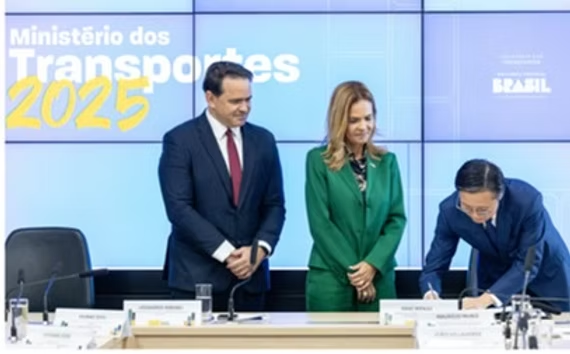In July 2025, Brazil and China officially launched a feasibility study for a proposed transcontinental railway linking the Atlantic coast of Brazil to the Pacific port of Chancay in Peru. The envisioned 4,500-kilometer route would begin in Ilhéus, Bahia, pass through Rondônia and Acre, cross the Andes, and reach Peru’s coast—connecting directly with the Chinese-financed megaport of Chancay. The agreement, signed by Brazil’s Infra S.A. and China Railway Economic and Planning Research Institute, marks a significant step in deepening infrastructure and trade ties between the two countries. The feasibility stage, expected to last up to five years, will analyze environmental, economic, technical, and social impacts across both countries.
The railway project is being framed as a transformative corridor for South American trade, with the potential to reduce shipping times to Asia by up to 12 days compared to routes via the Panama Canal. It also aligns with Brazil’s broader logistical integration strategy, which seeks to connect existing east-west rail networks—including the FIOL and FICO lines—to a direct export route toward the Pacific. China, which has heavily invested in the Chancay Port as a regional trade hub, views the railway as a way to secure a more efficient supply chain for commodities like soy, iron ore, and lithium—while advancing its strategic presence in South America’s transport infrastructure.
However, the project faces serious environmental and governance challenges. Conservationists warn that building a rail line through the Amazon and Cerrado biomes could lead to deforestation, habitat loss, and disruption of Indigenous territories—especially if safeguards are not rigorously enforced. Brazilian planners have indicated that the route will follow existing roads to reduce environmental disruption, but concerns remain. In Peru, some officials have expressed frustration over not being included in the initial agreement and are calling for formal involvement to ensure that national interests and territorial considerations are respected. As planning progresses, the project’s long-term viability will depend on transparent collaboration, cross-border coordination, and an inclusive approach that balances infrastructure development with ecological and social responsibility.

